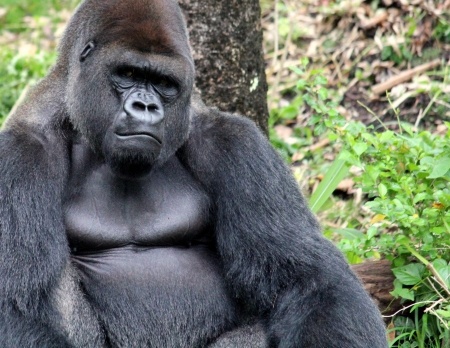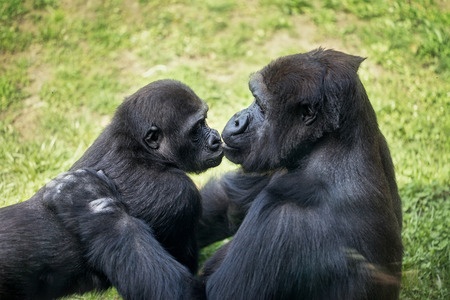Koko | Nonfiction Reading Test
Did you know that humans aren't the only species that use language? Bees communicate by dancing. Whales talk to each other by singing. And some apes talk to humans by using American Sign Language.

Where does a 400-pound gorilla sit?
Dr. Patterson says that Koko has mastered sign language. She says that Koko knows over 1,000 words, and that Koko makes up new words. For example, Koko didn't know the sign for ring, so she signed the words finger and bracelet. Dr. Patterson thinks that this shows meaningful and constructive use of language.
Not everyone agrees with Dr. Patterson. Some argue that apes like Koko do not understand the meaning of what they are doing. Skeptics say that these apes are just performing complex tricks. For example, if Koko points to an apple and signs red or apple, Dr. Patterson will give her an apple. They argue that Koko does not really know what the sign apple means. She only knows that that if she makes the right motion, one which Dr. Patterson has shown her, then she gets an apple. The debate is unresolved, but one thing is for certain: Koko is an extraordinary ape.
Sign language isn't the only unusual thing about Koko. She's also been a pet-owner. In 1983, at the age of 12, researchers said that Koko asked for a cat for Christmas. They gave Koko a stuffed cat. Koko was not happy. She did not play with it, and she continued to sign sad. So for her birthday in 1984, they let her pick a cat out of an abandoned liter. Koko picked a gray cat and named him "All Ball." Dr. Patterson said that Koko loved and nurtured All Ball as though he were a baby gorilla. Sadly, All Ball got out of Koko's cage and was hit by a car. Patterson reported that Koko signed "Bad, sad, bad" and "Frown, cry, frown, sad" when she broke the news to her.

Gorillas can be affectionate.
As for the future, Dr. Patterson and the Gorilla Foundation would love to get Koko to an ape preserve in Maui, but they are having trouble securing the land. So unless you have a few million dollars to spare, Koko's going to be spending her time in Woodland, California with Dr. Patterson. Koko probably doesn't mind that. If she moved to Hawaii, she'd have to give up her Facebook page and Twitter feed, and she's got like 50 thousand "likes." Some may deny that she knows sign language, but nobody says that she doesn't know social networking.